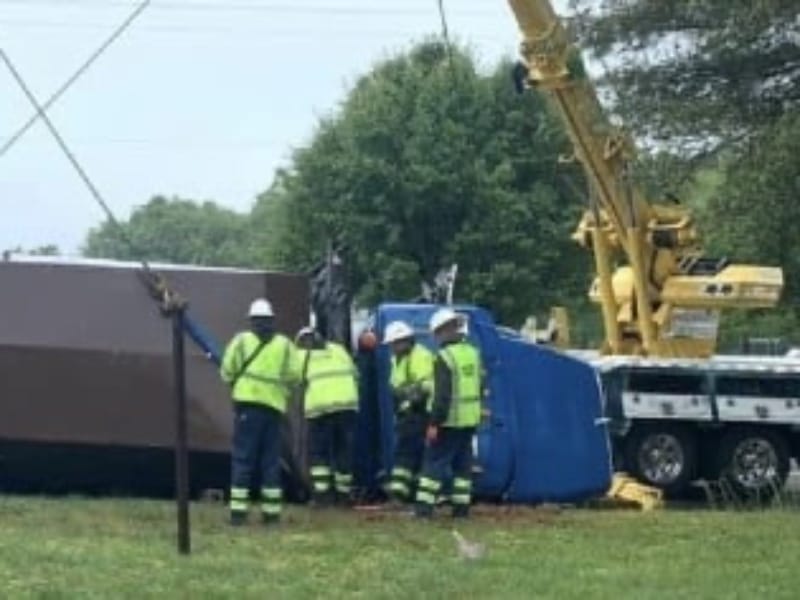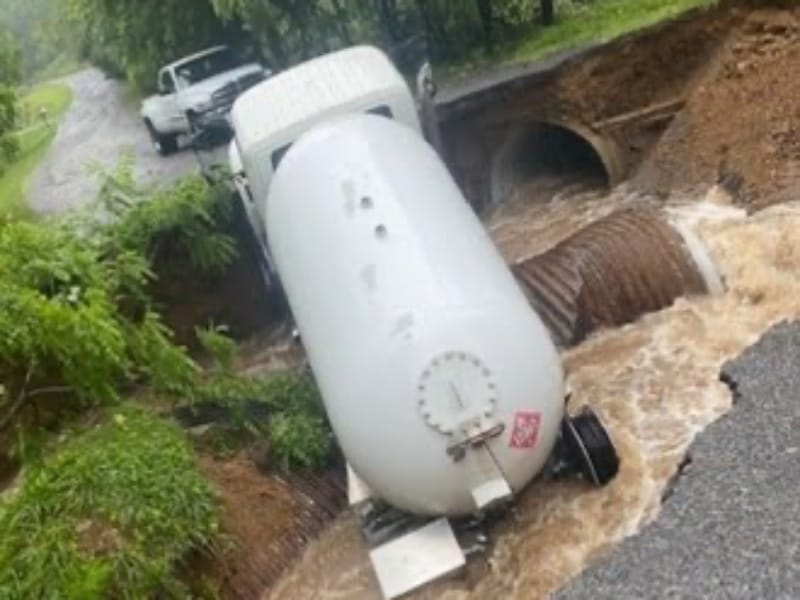Heavy Equipment Meets Impossible Terrain
A loaded excavator sunk axle-deep in Virginia clay can quickly turn into a $200,000 problem that grows more expensive by the hour. Off-road heavy recovery requires reading terrain like a map, understanding weight distribution physics, and having the nerve to winch a 40-ton machine out of a muddy creek bed without making the situation worse. Things can go sideways under the best of circumstances. Unpaved terrain or country roads can add an extra layer of complexity to any towing job. Especially when combined with bad weather. Every hour that a machine sits idle costs money, delays projects, and tests patience. Luckily, our Lynchburg heavy recovery specialists have ample experience tackling complex towing scenarios off the beaten path.

Reading the Ground Before Making a Move
No Pull Without a Plan
Off-road recovery starts long before any cables get attached. The terrain tells a story about what went wrong and what it will take to make it right. Soft spots that swallowed one machine can just as easily claim the recovery vehicle. Slopes that looked manageable in dry conditions become treacherous after rain.
During a Lynchburg heavy recovery operation, we walk the entire area first. We test ground stability, identify anchor points, and plan multiple exit routes. A hasty approach might turn one stuck machine into two stuck machines.
How Terrain Shapes Recovery Strategy
Mud, Sand, and Soft Ground Challenges
Soft ground creates unique problems that require creative solutions. A loader that’s fine on solid dirt can sink overnight after a heavy rain. The key to mud recovery lies in weight distribution and controlled extraction. We use timber mats, steel plates, and careful winch positioning to spread the load and prevent further sinking.
Sand presents different challenges. Desert job sites and sandy soil conditions allow machines to dig themselves deeper with every attempt to move. Recovery means understanding how sand behaves under load and using that knowledge to our advantage rather than fighting against it.
Steep Slopes and Rollover Situations
When heavy equipment tips or slides down an embankment, the recovery becomes a controlled engineering problem. We calculate angles, assess stability, and determine the safest approach for both the machine and our crew. Sometimes the best solution means taking the equipment apart piece by piece rather than trying to winch it out whole.
Slope work demands patience and precision. One wrong move can send a machine tumbling further down or put our recovery crew in danger. We take our time, use proper blocking, and never rush the process.
The Recovery Process From Start to Finish
Site Assessment and Planning
Every Lynchburg heavy recovery begins with a thorough site evaluation. We examine the stuck equipment, assess the surrounding terrain, and identify potential hazards. This planning phase determines the equipment we’ll need, the approach we’ll take, and the timeline for completion.
We document everything with photos and measurements. Weather conditions, ground stability, and access routes all factor into our recovery plan. A good plan prevents problems before they start and keeps everyone safe throughout the operation.
Execution and Extraction
The actual recovery work requires coordination between equipment operators, ground crew, and rigging specialists. We position our recovery vehicles for maximum mechanical advantage while maintaining safe distances from unstable ground. Every cable, chain, and strap gets inspected before use.
Communication stays constant throughout the operation. Hand signals, radio contact, and clear safety protocols ensure everyone knows their role and stays out of harm’s way. We move deliberately, checking progress at each step and adjusting our approach as conditions change.

Bee Line Transport: When Your Lynchburg Heavy Recovery Requires More Than Muscle
Lynchburg heavy recovery relies on control, not force. It’s about knowing how to apply pulling pressure without tipping a vehicle. It’s about selecting recovery gear that matches the load, the conditions, and the access path. Most of all, it’s about keeping the Lynchburg heavy recovery process steady, safe, and successful from the first anchor point to the final move.
Our investment in the latest tools, ongoing training, and proven techniques means Bee Line Transport can handle even the most challenging Lynchburg heavy recovery situations. From the first phone call to the final delivery, we work with a level of proficiency that matches the complexity of the job.
